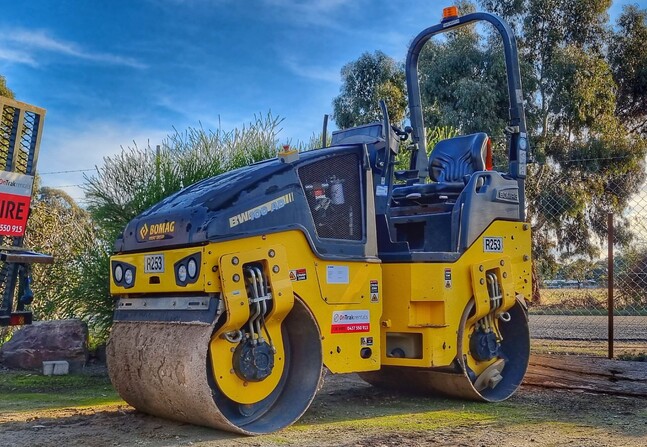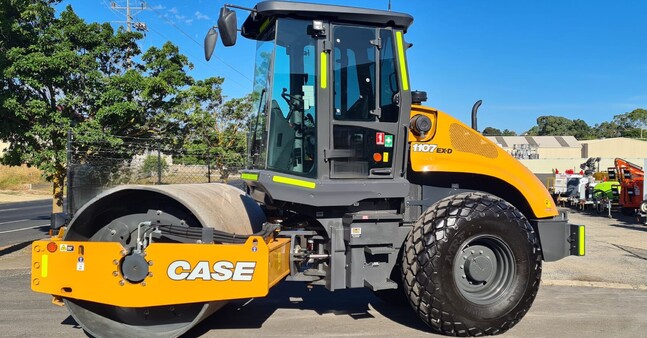Rollers are used to push, flatten and compact materials to create a flat and even work surface.
They are most commonly used for preparing an area for paving, roadways or asphalting. Compacting the soil with a roller, will insure your surface area will be free from imperfections and uneven ground, ready for new construction works or roadways. They create load-bearing subgrade soil by strengthening it through compaction, so that it can support heavy loads
If you need to hire a roller, one of the first things you need to consider is whether your project requires a smooth drum roller or a padfoot roller. Read on to discover more on the differences between the various types of rollers available.
What is a smooth drum roller?
As the name suggests, the smooth drum of these rollers provides excellent compaction power for a range of different soils and materials. Smooth drum rollers work by vibrating coarse materials such as gravel together into the ground. The soil or gravel particles respond to the vibration by rearranging naturally in order of size, making them fit closer together. This results in a well-compacted finish and a firm surface ready for paving or further works.
Smooth drum rollers are generally best for large areas, roadways and coarser fills such as sand and gravel, and bigger units up to 20T are great for compacting large areas quickly. However, smooth drum rollers also come in smaller sizes down to 900mm in width, which are great for tight spaces and footpath building. These narrower machines make light work of tight access areas and smaller worksite requirements.
The two types of smooth drum rollers; single-drum smooth rollers feature one large drum located at the front of the machine; while the rear is supported by two tires. While single-drum rollers afford the operator greater traction, control and maneuverability, they can lack the amount of compaction force generated by a double drum roller. Double drum smooth rollers switch out the rear tires for a secondary drum, which delivers greater power and compaction levels for heavy-duty work. However, with no rear tires, the operator has less control and traction when compared to a single-drum roller.
What is a padfoot roller?
Padfoot rollers are often referred to as sheepsfoot rollers and are typically used for compacting clay and other fine-grained soils and materials. The textured bumps on the roller assist with compacting silty clays, allowing the padfoot roller to move over the surface without lifting sticky mud or clay off on to the rollers drum. These single drum units use a combination of weight, vibration and shearing motions to compact heavy soils.
Padfoot rollers are best for working with cohesive and high water content materials like clay and mud. They can be used in applications such as preparing subgrade soils for pavement and new roadways, compacting soil in new dams and tailings ponds, compacting embankments, backfilling trenches and other heavy compaction jobs that involve silty and clay materials.
Padfoot rollers apply a higher degree of force wherever they connect with the ground, using a vibrating and kneading effect to compact the soil. This “kneading” mechanism, known as manipulative force, is something that cannot be achieved with a smooth drum roller. Surfaces flattened with a padfoot roller can offer greater structural support as a result of more tightly compressed soil, which has greater load-bearing properties.


